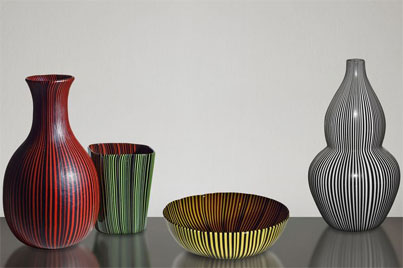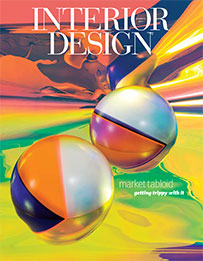A review of Venetian Glass by Carlo Scarpa: The Venini Company, 1932-1947 (Nov. 5, 2013 – March 2, 2014), written by JoAnn Locktov. “Scarpa had this thing for detail that would kill you with pleasure.” Ida Barbarigo Cadorin, painter (b 1925, Venice) The Unbearable Lightness of Scarpa To understand the glass that architect Carlo Scarpa created for Venini one must travel back in time—before 1906, the year of his birth in Venice, before Napoleon and …
All Articles
Clé Tiles in Architectural Digest November 2013
Clé Tiles is featured in the Architectural Digest MARKET REPORT that is highlighting "Smart products for stylish renovations" The text is by Stephanie Schomer and the piece was produced by Parker Bowie Larson. View the Full Article PDF Of the new collection, Deborah Osborn says, "All of 17th century's designs originated first from motifs inspired from nature and were carefully and artfully crafted into plates, vessels and tiles that were first popularized during the 17th century as …
Clé Tiles in Traditional Home Nov-Dec 2013
Clé is featured in Traditional Home. The November/December 2013 issue tapped the company's tiles by Ryan Hoffmann for their New+Next Market section. The magazine's editors say, "Inspired by his travels, South African artist Ruan Hoffmann has designed his second collection of cement tiles for Clé. "Postcards From Myself" includes 25 lithographed designs on 8-inch-square tiles, mostly in vibrant blues and poppy reds. Says Hoffmann: These designs represent my connections to the oceans where I have …
Clé in Interior Design October 2013
Please note that the iPhone cases are temporary unavailable. In the October 2013 issue of Interior Design magazine, editors say, "Forget dialing your phone - try tiling it! The manufacturer now offers a printed iPhone case in every one of its artisanal tile collections, from handmade encaustics to the classic Moroccan zellige. The most recent addition to the line is South African painter Ruan Hoffmann's hand-lithgraphed Postcards from Myself, Iznik-inspired patterns saturated, almost …
Punk: From Chaos to Couture
John Lydon (Johnny Rotten of the Sex Pistols) remembers the primary advantage of safety pins. He had no money and didn't know how to sew. It was the seventies, and punks were the disenfranchised, bitter and poor kids of London and New York. They would show up with paint splattered clothing, garbage bags cinched at the waist, hacked off hair, safety pins piercing skin and cloth. Their ideology allowed for the remarkable notion that they could dictate their own taste, no matter how subversive. …




